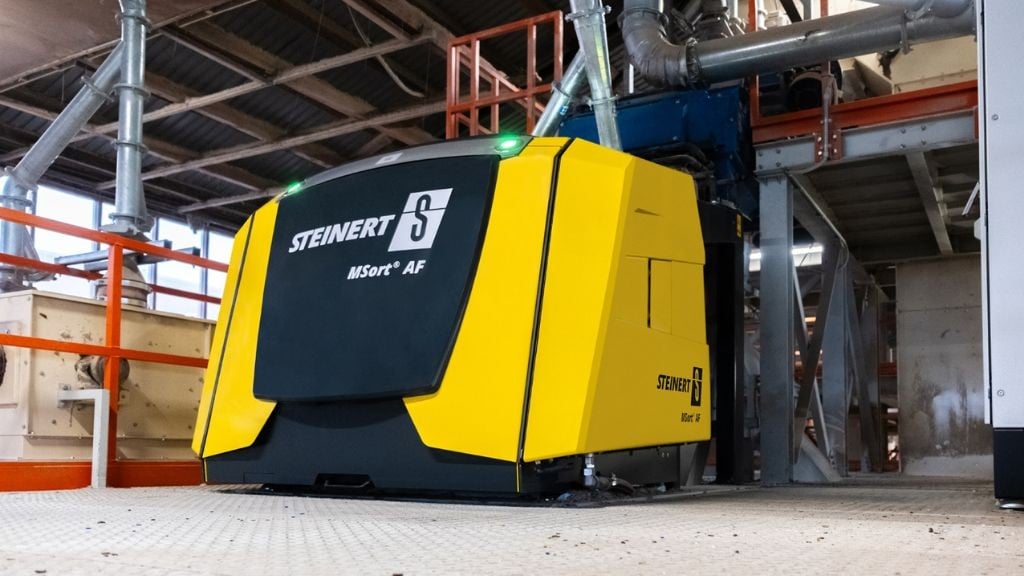Take a look inside Japan’s largest ASR processing plant
The MATEC plant uses STEINERT technology to process 30,000 tonnes of auto waste annually
Japanese metal recycler MATEC Inc. commissioned a new processing plant for auto shredder residue (ASR) from end-of-life vehicles in Tomakomai with sorting technologies from STEINERT. The plant will offer an annual throughput of 30,000 tonnes.
Metal recovery at the highest level
The new ASR plant collects and refines shredder light fractions and Zorba materials from a total of six other MATEC plants. The processing plant consists of two separate sorting lines that are geared toward different material streams and target metals.
While one line works on stainless steel and heavy metals, the second line is focused on separating metals from a light fraction. Even the smallest particles of less than six millimetres are processed and fed into the recycling process. The plant utilizes a total of 10 STEINERT sensor sorting systems, six non-ferrous metal separators, and two electromagnets.
Precise sorting for stainless steel and copper
The plant's goal is to recover stainless steel and cable materials, such as copper, from the shredder residue. The heavy fraction line processes the material in various grain sizes and passes it through several sorting steps.
The plant utilizes advanced separation technology, including non-ferrous separators, upstream magnetic separators, STEINERT ISS induction sorting systems, and STEINERT KSS CLI systems with a sensor combination of induction, 3D, and colour detection. These systems are used in succession to ensure efficient separation in the 30-60 millimetre and 60-120 millimetre size ranges.
For fractions of 6-30 millimetres, the focus is on copper extraction. STEINERT ISS and KSS CLI systems are used to efficiently isolate the cable fraction. The fines below six millimetres undergo a separate sorting process in which metals, particularly Zorba, are separated.
Efficient processing of shredder light fractions
The system also relies on technological precision when processing shredder light fractions. Fraction sizes below 25 millimetres and above 25 millimetres pass through non-ferrous separators and induction sorters, which reject all metals. These metal concentrates are then processed in a downstream system with X-ray transmission.
The remaining fractions, consisting of plastic, rubber, and similar materials, are used as fuel for the local cement industry, contributing to resource-conserving recycling and a circular economy.
Joint venture between Zenki and STEINERT
Zenki, known for its solutions in steel construction, supplied the structure on which the sorting systems are based. Armin Vogel, head of regional sales for Asia at STEINERT, said: "By combining their expertise in steel construction with our experience in recycling, we were able to build a plant that sets new standards in the processing of shredder residues."
Focus on sustainability and technological innovation
The ASR plant in Tomakomai is an example of how technological innovation and sustainability can be integrated. The sorting solutions provided by STEINERT ensure the efficient recovery of valuable metals from shredder residues, while the remaining fractions are utilized as fuel or raw materials. This addition to the circular economy not only conserves natural resources but also significantly reduces the industry's carbon footprint.




